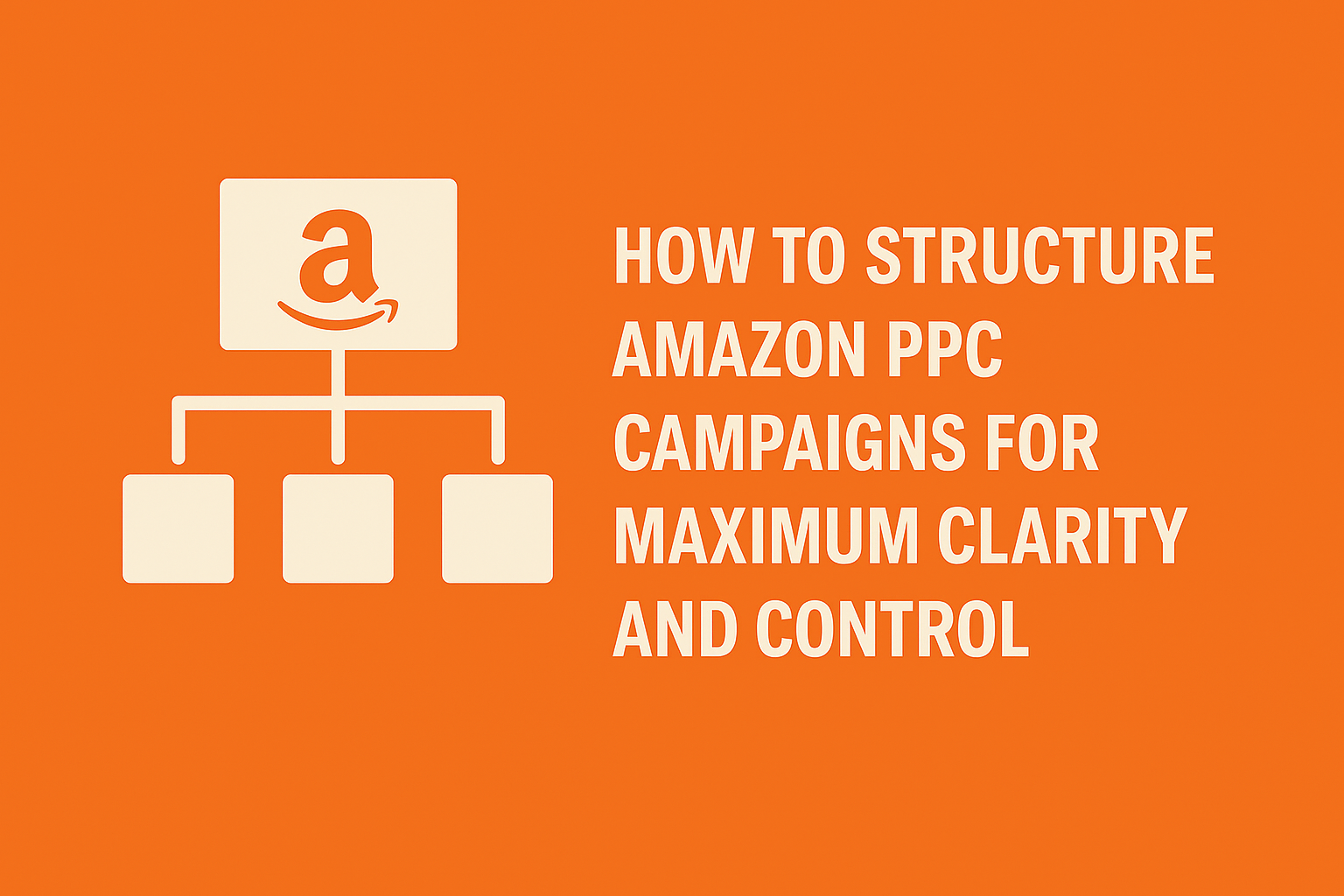How to Structure Amazon PPC Campaigns for Maximum Clarity and Control
Amazon PPC can either be a powerful growth engine or a black hole of wasted ad spend. The difference usually comes down to one thing: campaign structure. Without a clear system for segmenting branded, unbranded, and competitor-focused ads, you can’t control how your budget is being spent or accurately measure performance.
This article will walk you through a clear, scalable PPC structure that gives you full visibility into your ad account, makes it easy to adjust spend by intent, and helps you optimize both ACOS and TACOS in a meaningful way.
Understanding Branded, Unbranded, and Conquest Campaigns
There are three core targeting types that every Amazon PPC account should separate:
Branded Campaigns (Defensive, Lowest ACOS)
These target keywords that include your brand name and focus on protecting your turf. You can also use Sponsored Display ads to protect your own product detail pages from competitor ads.
Purpose: Defend against competitors appearing in your branded searches or on your product listings.
Reality Check: Branded campaigns don’t drive new-to-brand traffic. They convert well and have low ACOS, but they often inflate your overall PPC performance without growing your brand.
Unbranded Campaigns (Growth-Focused, Key to Scaling)
These are keywords that do not include any brand name – yours or your competitors’. Think “best french press” or “manual coffee maker.” This is where the real growth happens.
Purpose: Acquire new customers by showing up in generic product searches.
Pro Tip: Unbranded campaigns are your biggest driver of organic keyword rankings and long-term TACOS reduction.
Conquest Campaigns (Aggressive, Highest ACOS)
These target competitor brand names (e.g., “Bodum French Press”) and competitor product listings through Sponsored Products and Sponsored Display.
Purpose: Capture market share by targeting shoppers actively searching for your competitors.
Note: Conquest campaigns tend to have higher ACOS, but they’re a valuable way to steal traffic from your competitors and funnel their organic rankings away to grow your own. Though, product targeting ads typically convert more often then competitor keyword targets.
ACOS vs. TACOS: What They Really Tell You
ACOS (Advertising Cost of Sale) is calculated as ad spend divided by ad-attributed revenue. It only looks at your PPC sales.
TACOS (Total Advertising Cost of Sale) is ad spend divided by total revenue (PPC + organic). It tells you how efficiently your ads are driving total business growth.
Why It Matters: You can lower ACOS artificially by spending more on branded ads. But if that spend isn’t bringing in new customers or boosting organic rankings, your TACOS stays flat or even increases.
Example: One of our clients was spending over $50,000/month on branded ads. We paused all branded campaigns, and their total sales (organic + paid) actually increased while their profitability skyrocketed. The branded ads were not helping maintain sales AND the branded ads were not adding new to brand customers either.
How Campaign Structure Affects Performance Metrics
Segmenting your campaigns by intent – branded, unbranded, and conquest – gives you clarity over:
- Where your budget is going
- Which types of campaigns are actually driving growth
- How to shift spend to optimize both ACOS and TACOS
Recommended Campaign Structure
Use the following campaign setup to keep your account organized and scalable:
- Branded Campaigns: Use keyword targeting campaigns only, focusing on phrase match. Exact match is too narrow to fully cover your branded targets efficiently. Broad targeting can include phrases that are not actually branded.
- Unbranded Campaigns: All generic keywords. Segment by match type (broad, phrase, exact) using separate ad groups. Bid lower on broad, higher on exact. Negative phrase match your branded phrases and your competitors’ brand names.
- Conquest Campaigns: Target competitor brand keywords and competitor product listings.
- Auto Campaigns: Add negative phrase matches for your brand’s phrases.
Use Negative Keywords for Clean Segmentation (saying this again because this is important)
To keep campaigns focused and accurate:
- In unbranded campaigns, add negative phrase matches for all branded and competitor keywords.
Use Portfolios to Limit Branded Spend and Lower TACOS
Amazon’s ad portfolios are a helpful tool for capping spend at a higher level. You can use them strategically to set monthly budgets on specific groups of campaigns – for example, all branded campaigns.
By putting all your branded campaigns into a single portfolio and applying a monthly budget cap, you prevent over-allocating budget to branded traffic, which can inflate performance metrics without contributing to new-to-brand growth. This helps ensure more budget is preserved for unbranded and conquest campaigns that drive new-to-brand sales and organic rank improvements, ultimately reducing your TACOS.
Final Thoughts: Structure Gives You Control
The goal of your PPC structure isn’t just better reporting. It’s better decision-making. When you can clearly see how branded, unbranded, and conquest campaigns perform, you can shift spend toward growth drivers and away from vanity metrics.
Focus on unbranded campaigns to lower TACOS and scale. Treat branded as a defensive layer, not a growth channel. Use conquest to strategically capture market share. With a clean structure and smart negative matching, your account becomes easier to manage and much more profitable.

Kaleb started his Amazon journey as a data analyst for a wholesale beauty brand, where he helped grow their Amazon sales from zero to over $1 million per month. Since then, he’s worked directly with more than 100 sellers across a wide range of categories, focusing on growing their sales through expert account and inventory management, ad strategy, and catalog optimization. When he’s not working with sellers, you’ll find Kaleb enjoying life with his fiancée Jerah and their dog Clifford, his favorite team outside of Amazon.

